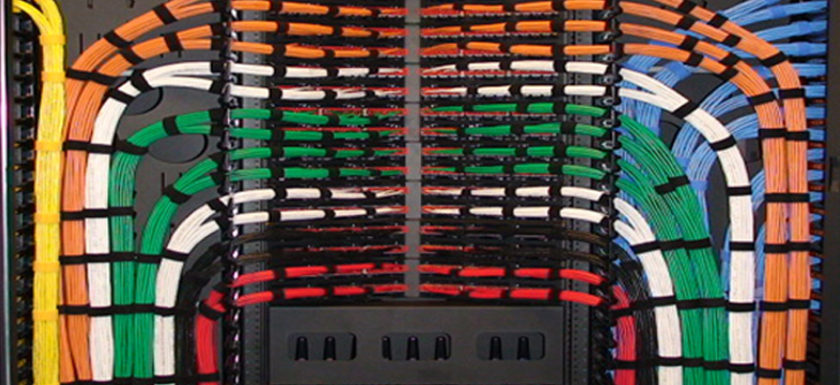
When installing server racks full of equipment such as servers, storage, switches and routers your cable management might perhaps get overlooked. In fact along with server heat management or cooling, cable management is one of the top challenges that IT technicians and network installers face in most data centers.
At Pacrad we offer data network cabling and rack management solutions so your cable network doesn’t have to look like a spaghetti bomb just detonated near your servers!
With some simple planning and the right arsenal of tools, you won’t have to worry about sorting through a maze of sloppy cabling, and you’ll be able to install a network that’s flexible enough to maintain, reconfigure and expand.
Here are top 5 rack cable management solutions to simplify your network installation and maintenance:
1. Horizontal Rack Cable Management
When installing cables in a server room the most important step you can take is to make sure the cables are all properly organized from the start! Horizontal cable managers are excellent for any kind of cable – fiber, coax, patch cables, copper wiring and more and ensure that your cables are well-organized and protected.
2. Vertical Rack Cable Management
Vertical racks, like the name implies are installed vertically and work very well to organize flow and hold cables optimally to ensure proper air flow leading to complex network systems not getting overheated. They’re also great for installations where you need to save space or need to make more room in the future to expand your network.
3. Cable Hangers and Trays
If you need to organize cabling within racks cable hangers can come in handy. Cable trays are excellent for running wires from one place to another and can be mounted on the floor or overhead in the ceiling. There are several options available like perforated trays that allow good air ventilation or solid cable trays that offer superior protection.
4. Data Patch Panels
For data and telecommunications networks a patch panel is an essential piece of equipment. Data patch panels are available in a variety of different configurations depending on what you need. In essence, a patch panel is a board with a number of different ports to connect network wiring. It is also great for consolidating (and labeling cables) so that your network setup looks neat and organized.
5. Fiber Optic Patch Panels
Similar to data patch panels, fiber patch panels are designed specifically for fiber optic cables. Also known as termination units they can accommodate connectors, patch cables and more and network technicians can easily connect cable fibers through cross connection, test the cable patch panel, and connect it to other network equipment.
It might seem a bit of an investment initially but organizing your cables not only makes your data center look neat and professional but makes a huge difference when it comes to server maintenance and troubleshooting.
Stop by our Burbank store or conveniently shop online for everything data and networking at Pacrad!

Perfect blog for network technicians all the five points are considerable. Useful information. Thanks for sharing.